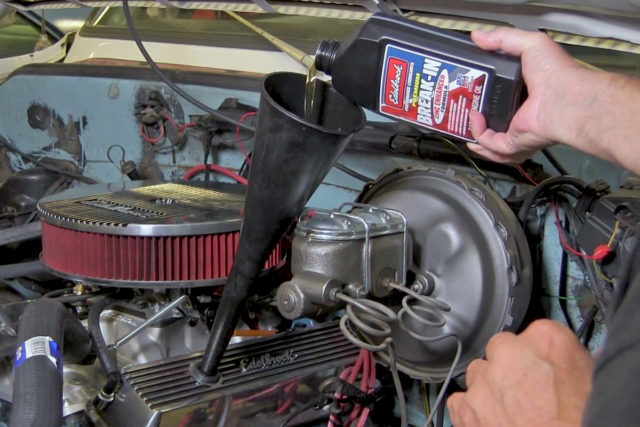When rebuilding an engine with a flat-tappet camshaft, there are a number of specific camshaft break-in procedures that should be followed as best practices to get the most performance and longevity out of your new combination. Edelbrock’s tech line receives a lot of questions regarding the proper method of installation and break-in for their line of flat-tappet camshafts. In this video, Edelbrock’s August Cederstrand walks you through the proper camshaft break-in methods and best practices to maximize your new flat-tappet engine combination.
Since a flat-tappet cam operates without the aid of any mechanical wear buffers between the lifter and the camshaft, the parts will “wear-in” together. That means that specific lifters and camshaft lobes will be married to one another throughout the life of the parts. That also means that with a new flat tappet camshaft, new flat tappet lifters are a must, and Cederstrand illustrates that point in the video with some cool animations. Installation and timing of the camshaft is no different than any other camshaft design, but where the real difference comes into play is the required break-in procedure once everything is reassembled.
The first, and most crucial step to the camshaft break-in process is to drain any oil in the engine, spin on a new oil filter, and fill the engine with a break-in oil containing high levels of zinc and phosphorous. The additives in the break-in oil will act as a buffer between the camshaft and lifter during the break-in, and allow the gradual wearing-in of the two parts under the controlled parameters of the break-in process.
The first step, once you fire up the engine (whether on an engine dyno or in the car makes no difference) is to immediately bring the engine speed up to 2,500 rpm, with timing between 25-40 degrees, and hold it there for 10 minutes while closely monitoring the oil pressure. Step two is to increase the engine speed to 2,800 rpm for another ten minutes, followed by a third and final 10-minute step at 2,000 rpm. From there, the engine should be allowed to slowly return to a normal idle speed and then shut off. Another oil and filter change, this time using either high-zinc engine oil, or a conventional oil and an additional zinc additive. At this point, your camshaft and lifters are properly broken-in, and you can tear off into the sunset knowing you are going to get the maximum life and performance out of your new flat-tappet combination.






















